How to Grow Celery at Home the Easy Way [Top Advice + Tips]
With its green, crisp stalks, celery is the perfect vegetable for adding juicy crunch to a meal.
And even though growing it can be tricky, the earthy, fresh taste and unbeatable crunch of homegrown celery will convince you it’s worth growing.
And if you’re up to the challenge, you’ll be rewarded with some of the best celery you’ve ever tasted!
But if you’re hesitant to take the plunge and still want celery’s unique flavor in your cooking, you can also try celeriac or cutting celery, which I’ll discuss below.
Let’s dig into everything you need to know about producing a bountiful crop of celery in your square foot garden!
FREE BONUS: Take the guesswork out of square foot gardening. Get my easy-to-use Square Foot Garden Spacing Chart now.
How to grow celery in your square foot garden:
Heads up: I’ll earn a small commission if you buy something after clicking a link in this post. I only link to products I’d recommend to my best friend.
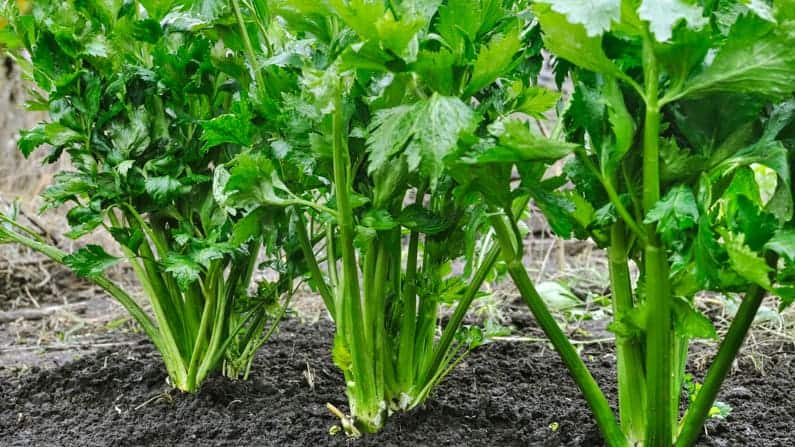
How to grow celery in a square foot garden.
Celery is a cool-season crop, but it’s slow to get started.
So, start your seeds indoors long before transplanting them in mid-spring.
There are two types, blanching, and self-blanching.
A lot of commercial celery is the blanching type.
If you’ve ever rinsed grit from the cracks and crevices of your store-bought celery, it’s because blanching types are grown in a trench and then hilled up with soil several times during the growing season (much like potatoes).
Self-blanching varieties are easier to grow for home gardeners, but there’s a trade-off…
While they mature faster, they produce less.
Feeling nervous about growing a successful crop of celery? Try these alternatives:
- You can’t go wrong by growing celeriac, a celery relative that produces large knobbly roots that taste like celery.
- Or, you can grow cutting celery.
- It’s an easy-to-grow leafy herb with a strong celery flavor that shines in cooked dishes and dries well.
I’ve included a couple of varieties below.
Related: New to square foot gardening? Learn about square foot spacing.
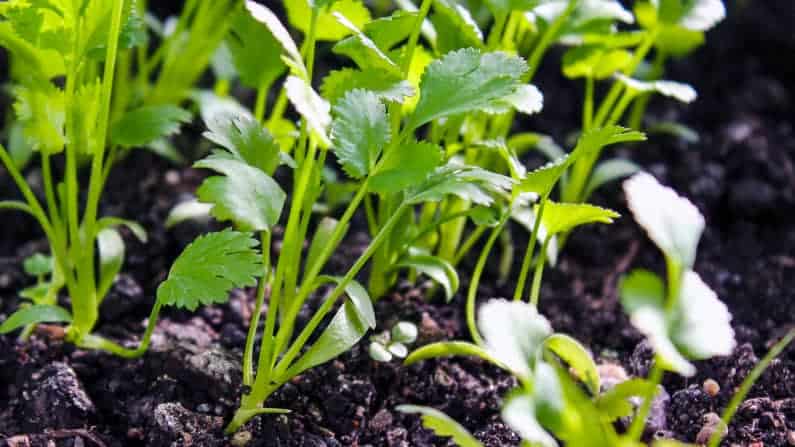
Here are some of my favorite varieties:
Before you decide what variety to grow, check with your local Cooperative Extension office (U.S. only) to see what types will grow well in your area.
- Utah reliably produces a crop of sturdy stalks. Blanching improves its flavor. (You can find Utah celery seeds at Botanical Interests, one of my favorite seed companies!)
- Ventura is an early variety with a firm stalk and a tender heart.
- Golden Self-Blanching is an heirloom variety with a delicate flavor.
- Brilliant (Celeriac) is an intensely flavorful variety, making it perfect for adding to soups and stews.
- Cutting Celery (also called Leaf Celery) is easier to grow than standard celery. It’s a versatile ingredient for salads, soups, and stews.
Quick Tip: For the best possible results, download my free printable Square Foot Gardening Chart so you can quickly find the right spacing for over 20 vegetables.
Celery growing tips and info:
Botanical name: Apium graveolens
Celery is a member of the umbellifer family, which includes carrots and parsley.
Height: 15-18″
Celery is a cool-season crop and can withstand some frost and light freezes.
Growing season: summer through fall.
Celery seed will last 3-5 years. Read more about how long your seeds will last.
Time to harvest: After transplanting your seedlings, you’ll gather your first stalks in about 85-110 days, depending on the variety. Check your seed packet for the exact number of days.
Water requirements: high.
The nutrient requirements of celery are high. It has a shallow root system and grows best in rich soil.
- Amend your planting bed with a couple of inches of compost or aged manure.
- This isn’t the time to skimp on organic matter!
- You’ll get the best yield when you side-dress it with fertilizer during the growing season (in addition to the compost).
NOTE: If you’re growing cutting celery, treat it like most herbs – give it well-draining soil, an average amount of water, and minimal fertilizer.
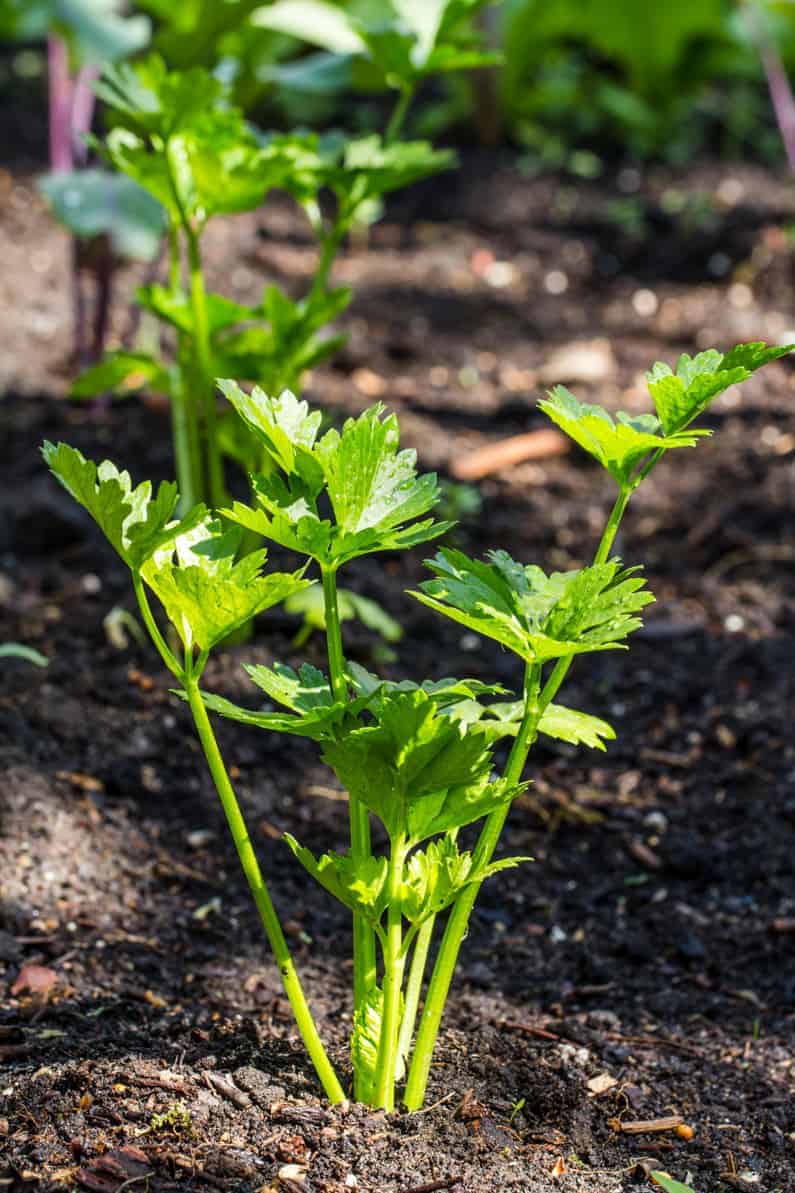
Companion plants and interplanting
Celery will do well when planted near a companion plant with high nutrient and water needs, like cabbage, broccoli, or cauliflower.
Because it’s a slow grower, take advantage of the available space and interplant quick-growing spring veggies like lettuce, spinach, or radish between plants to maximize space early in the season.
How to plant celery in your square foot garden.
Start your seeds indoors, under lights, 10-12 weeks before your last frost.
- Plant your seeds 1/8″ deep, or sprinkle them on the surface of the potting soil and press them in.
- Keep the soil warm (60-70°F) until the seeds sprout.
- They should germinate in about seven days.
- Harden them off before transplanting.
- Transplant them into your garden bed 2-3 weeks before your last frost.
Celery can tolerate some shade. So, plant it in an area that gets at least 5-6 hours of sun per day.
Tips on growing celery from MIGardener:
Succession planting and season extension
You can grow a second celery crop in the fall if you have transplants ready to go in July. The exact date will depend on the date of your average first frost.
It can survive a light frost if you cover it with frost protection fabric.
Celery spacing in a square foot garden
Spacing for celery in a square foot garden is 2-4 plants per square foot.
You may see recommendations online to plant four plants per square foot.
And that may be the spacing you want to use once you have some growing experience under your belt.
It also depends on whether you’re growing a self-blanching type or not. Trenching and hilling up celery in close quarters may not work out well in a square foot of growing area.
- Since it can be challenging to grow, start with two per square foot and try four if the wider spacing worked for you.
- Space celeriac and cutting celery at 4 to a square foot.
Find the right spacing for ALL your vegetables in less than one minute. Download my FREE square foot gardening chart pdf to get started.
Now that you know the proper spacing, it’s time to mark out your holes in your square foot garden or raised bed and transplant your seedlings.
You don’t need special tools or equipment to set out your transplants. I use a measuring tape, a ruler, and a trowel to plant each celery seedling.
Related: To learn more about planning and growing a successful square foot garden, check out Small Space, Big Harvest, my vegetable garden planning course.
Celery growing tips
Unless you live in an area with hot summer temperatures or intense sun, place your transplants in a spot where they won’t get shaded by taller plants — we’re talkin’ tomato, corn, or pole beans.
Because their roots are shallow and small, you’ll want to keep your plants free of weeds and well-watered.
- If you let the soil dry out, you’ll get something that looks like celery but is tough and bitter- a snack fit for goats rather than people.
- Check the moisture level of your soil regularly, but don’t drown the plants.
- Adding a layer of straw mulch will go a long way to help reduce evaporation, keep the soil evenly moist and reduce weeds.
Some common pests and diseases are aphids, cabbage looper, carrot weevil, celery mosaic, and early and late blight.
If diseases like celery mosaic or blight have been a problem for you, look for disease-resistant varieties.
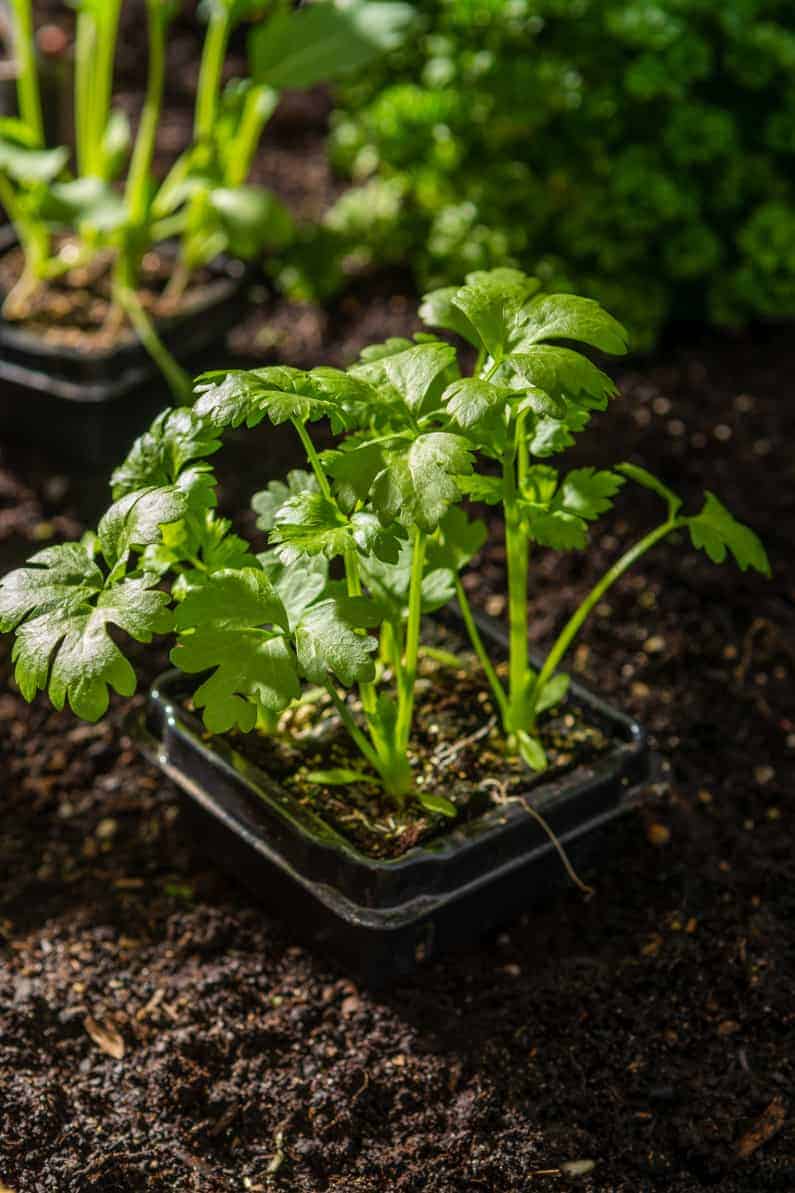
Growing celeriac and cutting celery
Grow celeriac by following the same procedures as for celery. The main difference is that you’ll harvest it after your first fall frost.
Cutting celery is the easiest way to enjoy celery flavor without all the fuss.
Harvesting your celery crop.
How do I know when celery is ready to harvest?
You can harvest celery as soon as the outer stalks are big enough to eat. To cut a celery stalk from the plant, use a sharp knife and try not to injure nearby stalks. Cut a few at a time to keep the harvest going.
Or, once a plant is ready to harvest whole, cut it off at the soil line.
It’s best to harvest it in the cool of the morning to prevent it from wilting in the heat.
And get it into the fridge quickly after harvesting it to retain its crispiness.
How to store celery.
Store whole celery wrapped in aluminum foil in the crisper drawer of your refrigerator.
And store cut stalks submerged in water in a sealed plastic container. This will keep them firm and crisp.
Revive limp celery by placing it in a tall container of cold water.
Harvesting and storing celeriac and cutting celery
Harvest celeriac after the first touches of frost in the fall by carefully digging it up with a garden fork. Trim the leaves to an inch or two long, and store it in your root cellar or a cool, dark spot in your pantry.
Harvest cutting celery when the leaves are large enough to harvest. They dry well and retain their flavor, so try dehydrating some.
Could you use a FREE square foot spacing guide that’s easy to use even if you’re new to square foot gardening? Click here to get started!
Frequently asked questions about growing celery.
How long does it take celery to germinate?
Celery seeds will germinate in about seven days when planted at the proper depth (soil surface to 1/8″ deep) and kept between 60 and 70° F. Soak the seeds overnight in water to speed up germination.
What type of climate does celery prefer?
Celery is a cool-season crop, so it does best in the cooler damp weather of spring. You can grow it as a fall crop if you give it enough water and fertilizer.
How long does celery take to grow?
Celery is a painfully slow-growing vegetable. You must start the seeds indoors 10-12 weeks before your last frost. After transplanting, it takes an additional 90-110 days to fully mature.
But you can nip off a stalk here and there as it grows. So you may be harvesting it as early as 80 days from transplanting it.
What are the common problems with growing celery?
The most common growing problems are a lack of rich soil and a lack of water. Celery needs a lot of nutrients and moisture to mature. If you provide a steady diet of both, you have the best chance of success.
How many celery plants should I plant per person?
That depends on how much you like and eat celery. One plant will last a couple of weeks in your fridge and produce 6-8 good-sized stalks per plant. A good starting place is 1-2 plants per celery “liker” and five or more for celery lovers.
Download a square foot gardening chart.
It’s easy to always use the right spacing for your vegetables. Just download the Square Foot Gardening Chart and:
- Print it.
- Put it in a handy spot.
- Pull it out when you’re ready to plant seeds or transplants.
It really is that easy!
Here’s a sneak peek of your chart:
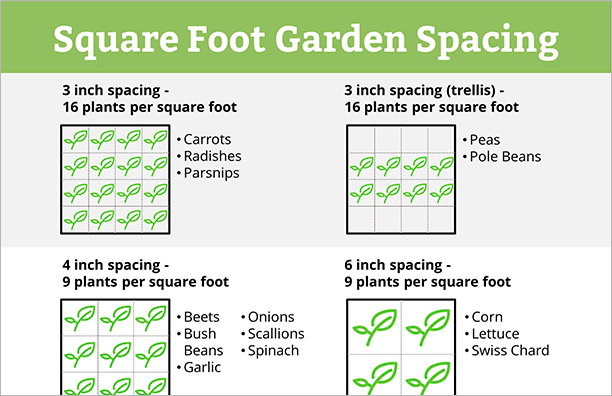
Your turn: Have you grown celery in a square foot garden?
Have you used square foot spacing before?
Tell me how it went! Share in a comment below.👇



I am a newbie gardener and I was looking for simple to use gardening tips when I came across these notes. I found the simple instructions helpful and easy to follow. I will be using your notes to grow my celery garden this year.
I was looking for a way to help me grow and space my celery plants in the most efficient way possible and I found this. It’s a simple way for gardeners like me who have limited space and want to grow their own celery.
Cool! I’m glad this was helpful to you!